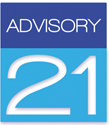- Version
- Download 0
- File Size 4.00 KB
- File Count 1
- Create Date April 11, 2021
- Last Updated May 13, 2021
Announcements
Announcement 01 - Welcome
Announcement 02 - Change of scheduled session date. Please note that the Session 04 scheduled for Thursday 22 April will now be held on Friday 23 April at 17.30hrs.
Academy Documents
Lecture Presentations
Lecture presentations will be available during the week following the lecture.
Lecture 1 - Becoming a Trainer
Lecture 2 - Establishing Learning Needs
Lecture 3 - Choosing the right Training Method
Lecture 4 - Planning a Training Session
Lecture 5 - Developing Effective Training Materials
Lecture 6 - Effective Communication
Lecture 7 - Confidence Building and Public Speaking Techniques
Lecture 8 - Delivering a Training Session
Lecture 9 - Evaluating a Training Session
Lecture Summaries & Suggested Reading
Lecture 1 - Becoming a Trainer
- Understand the definition of learning.
- The power of a Learning Organisation.
- Discuss the importance of training.
- Recognize the do’s and don’ts of what makes a good trainer.
- List the typical duties of a professional trainer.
- How to avoid barriers to learning
Core Reading List
- O'Carroll, E., 2012. Train The Trainer. Dublin: Gill & Macmillan.
Supplementary Reading List
- Ally, M., 2008. Foundations of educational theory for online learning. In The Theory and Practice of Online Learning
Lecture 2 - Establishing learning needs
- Defining learning needs.
- Understanding the importance of the Training Needs Analysis.
- Conducting a Training Needs Analysis.
- Understanding the Conscious Competence Ladder.
- How to use the Conscious Competence Ladder.
Core Reading List
- Simmonds, D., 2009. Designing And Delivering Training. London: CIPD.
- Training the Trainer: the Art of Training Delivery, 2nd edition (Skills Converged)
Lecture 3 - Different types of training methods
- Understanding the different types of training methods:
- Instructor-led Training
- E-Learning
- On-the-Job Training
- Coaching and Mentoring
- Understanding the advantages and disadvantages of each training method.
- Choosing the right training method.
Core Reading List
- Simmonds, D., 2009. Designing And Delivering Training. London: CIPD
Lecture 4 - Planning a training session
- Devising the learning objectives.
- Understanding the different learning styles.
- Creating an outline of your presentation.
- Understanding the Adult Learning Principles.
- Identify the importance of Time Management.
Core Reading List
- O'Carroll, E., 2012. Train The Trainer. Dublin: Gill & Macmillan
- Simmonds, D., 2009. Designing And Delivering Training. London: CIPD.
Supplementary Reading List
- Selwyn, N., Gorard, S., & Furlong, J., 2006. Adult learning in the digital age: information technology and the learning society, London Routledge.
Lecture 5 - Developing effective training materials
- Choosing the right font and font size.
- Understanding the importance of simplicity.
- When to use transitions and animations.
- How to use the colour wheel.
- List and understand the different types of visual aids.
Core Reading List
- Simmonds, D., 2009. Designing And Delivering Training. London: CIPD.
- Good, D. and McFadyen, C., 2018 101 Training Activities & How To Run Them.
Lecture 6 - Effective Communication
- Understanding the importance of communication.
- Understanding the process of communication.
- Defining the types of communication.
- The art of giving and receiving feedback.
Core Reading List
- Good, D. and McFadyen, C., 2018 101 Training Activities & How To Run Them.
- Training the Trainer: the Art of Training Delivery, 2nd edition (Skills Converged)
Lecture 7 - Confidence Building and Public Speaking Techniques
- Preparing for Training Delivery.
- Managing presentation nerves.
- Understand and practice building confidence and control.
- Tips to control fear and improve your public speaking.
Core Reading List
- O'Carroll, E., 2012. Train The Trainer. Dublin: Gill & Macmillan.
- Simmonds, D., 2009. Designing And Delivering Training. London: CIPD.
Lecture 8 - Delivering a training session
- Recognize the importance of using ice breakers.
- Recognize the importance of using energisers.
- How to start strongly and create powerful endings.
- Understand the importance of using two-way communication and eliciting information.
- Using online tools to engage your audience.
Core Reading List
- Good, D. and McFadyen, C., 2018 101 Training Activities & How To Run Them.
Supplementary Reading List
- West, E., 1999, The Big Book Of Icebreakers.
Lecture 9 - Evaluating a training session
- Understanding the purpose of learning evaluation.
- Understanding the benefits of learning evaluation.
- Listing the different types of training evaluation models.
- Using Kirkpatrick’s Model of Learning Evaluation.
Core Reading List
- Simmonds, D., 2009. Designing And Delivering Training. London: CIPD.
- O'Carroll, E., 2012. Train The Trainer. Dublin: Gill & Macmillan.
Supplementary Reading List
- Kirkpatrick, D., Kirkpatrick, J., 2007. Implementing the Four Levels: A practical guide for effective evaluation of training programs. Berrett-Koehler Publishers, Inc.
Lecture 10 - Practical Assessment
- Use various delivery techniques to present a training session in a clear and concise way.
- Handling effective Q&A Sessions.
- Receive feedback for self-assessment and self-improvement.
Core Reading List
- Simmonds, D., 2009. Designing And Delivering Training. London: CIPD.
- Training the Trainer: the Art of Training Delivery, 2nd edition (Skills Converged)
- O'Carroll, E., 2012. Train The Trainer. Dublin: Gill & Macmillan.
Assessment Method
You will be asked to design and deliver (part of) a training programme in a field of your choice. You will be expected to deliver a 15 minute presentation on your assignment. The date when you have to deliver the presentation will be Thursday 13 May between 17.30 and 20.00hrs.
Please read, fill in and submit the Presentation Submission Form together with your presentation. This Presentation Submission Form includes the question which has to be addressed through your presentation,
This Presentation Rubric is being made available for your guidance. This is a performance-based assessment tool. Tutors will use the rubric to assist them to allocate scoring while it allows students to understand what is required in the presentation and how your presentation will be graded.
The presentation should be sent in pdf format together with the Presentation Submission Form to the academy on info@advisory21.com.mt by not later than noon on the day it will be delivered. Do not scan the presentation but convert/save it directly to pdf.
Note that the submitted presentations will be scanned for plagiarism.
Upcoming courses...


